Thyme Plant Care: How To Grow, Harvest & Use It (2023)
Thyme has been celebrated for its beneficial properties and pleasing flavors for centuries. Here’s everything you need to know about thyme plants and their benefits – everything from growing them to using them in your favorite recipes!
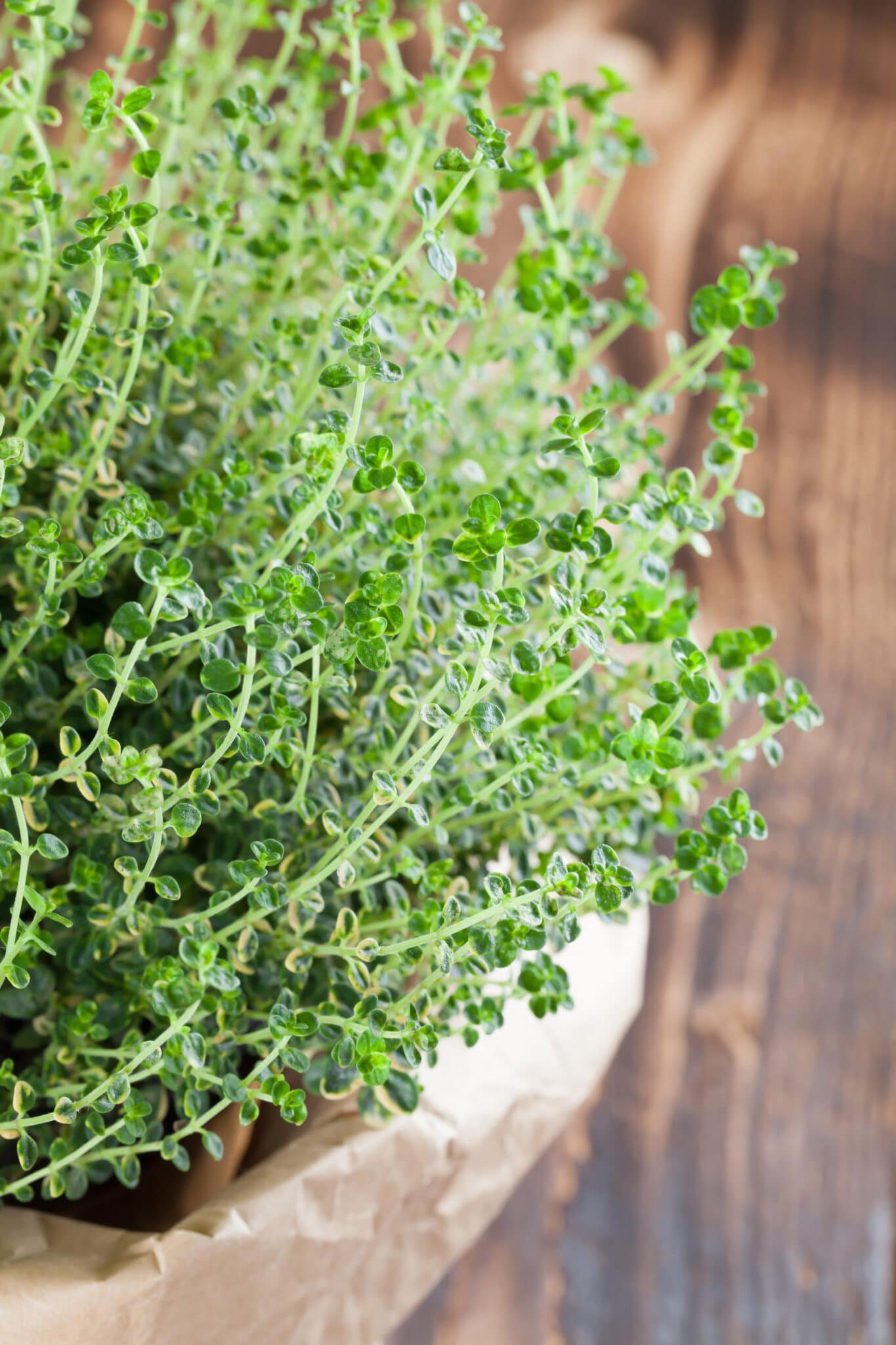
Thyme is very aromatic and smells just like summertime. If summer could be captured in one single scent, I’m sure it would be thyme.
The herb is a staple of many different Mediterranean cuisines and many seasoning blends used worldwide. It lends a subtle, savory flavor to any recipe and tastes especially amazing in soups, poultry, and roasted dishes.
Thyme is part of the Thymus genus of the mint family (Lamiaceae), which contains dozens of species, all of which are native to the Mediterranean region of the world. All thyme plants are woody, low-growing shrubs that have small round leaves, woody stems, and beautiful small blooms.
It’s important to note that thyme is a broad category, comprising two types of varieties:
- Ornamental
- Culinary
There are far more ornamental varieties than culinary, so keep an eye out for that when purchasing your thyme plant! If you are unsure, ask the folks at your local garden center for help.
The top three culinary varieties of thyme are:
- Lemon
- Caraway
- French
Beyond the obvious addition of thyme to your herb and vegetable gardens, it also makes a wonderful addition to tea gardens! If you have ever considered growing your own tea garden, check out our guide.
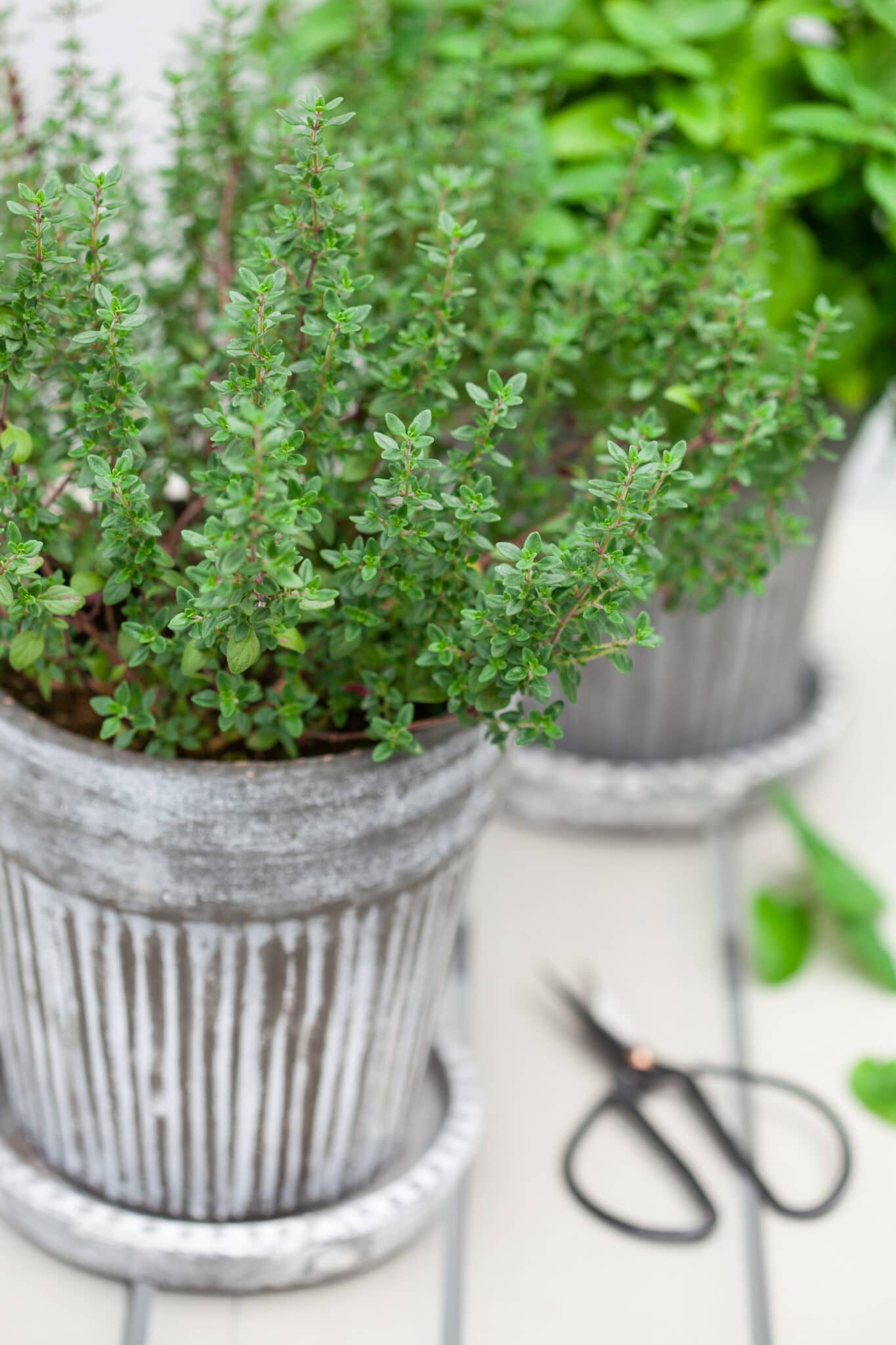
Benefits of thyme
Thyme provides many different benefits, such as:
- Relieving anxiety
- Enhance mental clarity
- Reduce inflammation and pain
- Calming respiratory problems
- Relieve mild gastrointestinal problems
- Help prevent acne
- And more.
Growing Thyme Plants
This hardy perennial herb is drought-tolerant, pollinator-friendly, and evergreen in most hardiness zones. Growing thyme is very simple because the plant thrives on neglect. These Mediterranean herbs evolved in a hot, arid zone, so they prefer dry, sandy soil.
Thyme can even be grown outdoors in winter, with the proper techniques! Check out this guide to winter gardening for more info!
Perfect for the neglectful gardener!
Growing Needs
Thyme plants prefer hot, dry conditions over cool, moist growing areas. Give your plant these conditions, then leave it alone for best results.
- Hardiness zone: 4-9 (insulate it with mulch for winters in zones 4-6)
- When to plant: Plant new plants directly into the ground or in a container after the last frost in early spring.
- Light: Full sun.
- Soil: Sandy/Loamy with good drainage.
- Fertilizing: Fertilizer isn’t needed and could cause rapid growth while sacrificing flavor.
- Watering: Water once the top inch of soil dries out. Prevent the soil from getting too wet. Overly wet soil can lead to root rot.
- Flowers: Small purple, pink, or white flowers.
- Spacing: Space young plants 12-24 inches apart. If you want to grow thyme in a container, you can leave it outside all winter and let it enter a dormant state until the weather warms back up.
Learn More: Not sure which climate zone you’re in? Check here!
Popular Varieties Of Thyme Plants
You can grow a wide variety of thyme in your herb garden. However, only a few are suitable for use in food, and all of them have a subtle minty flavor as part of their flavor profile. So it is good to know what you’re growing or buying for that new recipe.
For example, French thyme vs. English thyme: French thyme has a much sweeter aroma that does well in dishes like stews. On the other hand, English thyme has strong notes of clove that French thyme doesn’t have.
English Thyme (also referred to as garden thyme)
English thyme (Thymus vulgaris) is probably the most common thyme plant. Imported to England by the Romans, English thyme has notes of mint and cloves and is more cold-hardy than other varieties. It is often referred to as “Garden Thyme.”
French Thyme ( also referred to as summer thyme)
One of the most well-known thyme varieties, French thyme (also Thymus vulgaris) has strongly aromatic gray-green evergreen leaves that taste amazing in many different dishes. French thyme has a sweeter aroma than English thyme. The dominant component, thymol, has a strong scent and is also used in Vicks VapoRub, but don’t let that deter you from cooking with it!
German Thyme ( also referred to as winter thyme)
German thyme is similar to English, but its flavor is much less intense. The German variety of thyme is cold-hardy and can grow in locations where English thyme cannot. Due to it’s cold, hardy nature, german thyme is called winter thyme.
Golden Lemon Thyme
Lemon thyme (T. x citriodorus) is a popular culinary herb thanks to the citrus aroma from the aromatic oils and flavor of its two main components: geranial and neral. Include lemon thyme’s dark green leaves with mild-tasting ingredients for a boost of flavor.
Caraway Thyme
Another popular culinary herb, caraway thyme (T. herba-barona) has a flavor reminiscent of caraway and tastes amazing in bread recipes, sauerkraut, as well as seasoning greens. Caraway thyme is a very low-growing plant that spreads out rather than up!
Woolly Thyme
Woolly thyme (Thymus pseudolanuginosus) is an ornamental variety that has no scent and creates a low-growing “carpet.” It’s perfect for growing in rock gardens.
Creeping Thyme
Creeping thyme (Thymus praecox) is another ornamental variety that boasts lovely lavender, magenta, or white flowers. True to its name, this variety spreads quickly, making it an excellent ground cover.
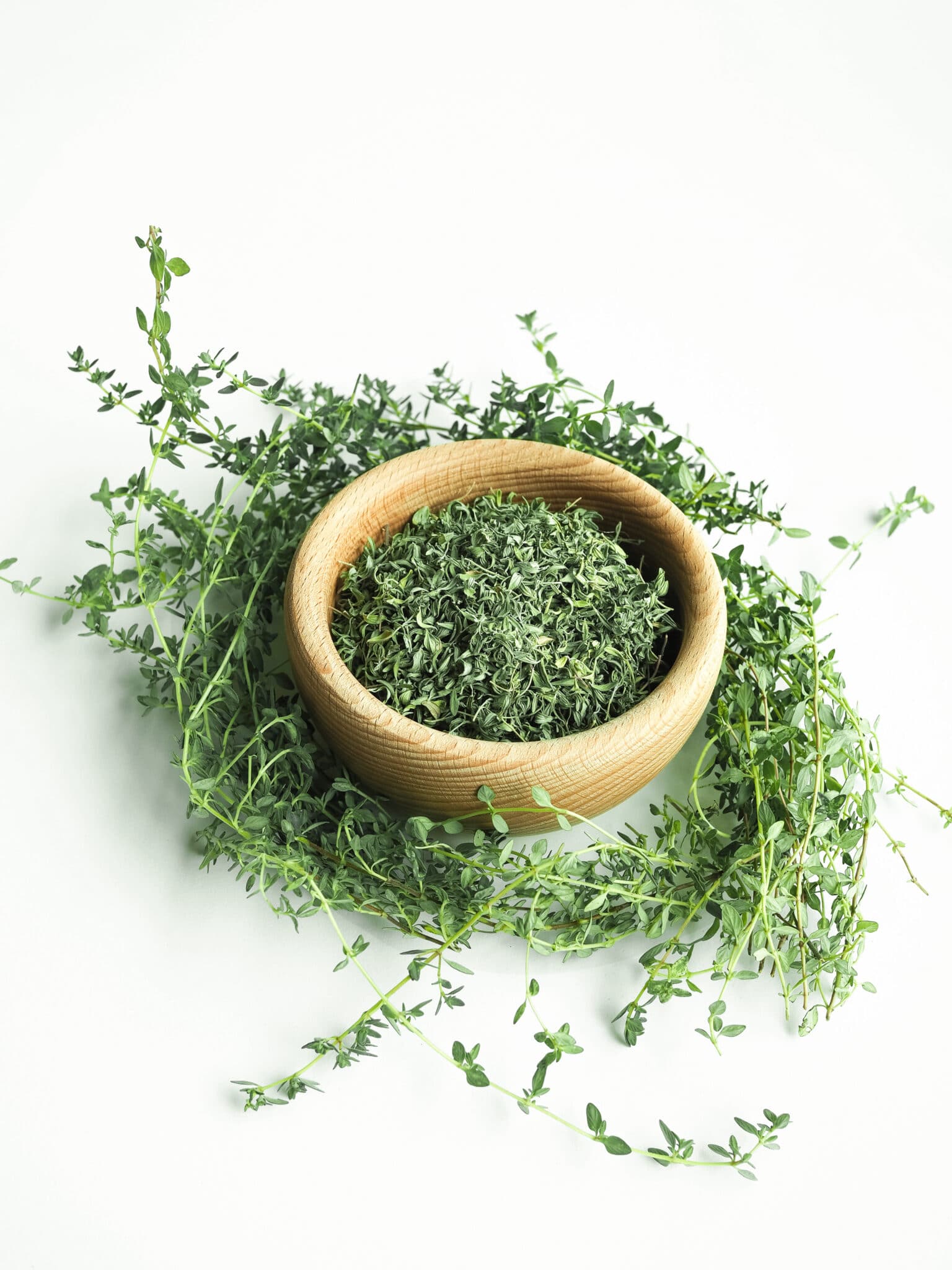
Ideal Growing Locations
Thyme plants are pretty fuss-free, drought-tolerant, and thrive on neglect. As long as you grow it in a location with plenty of sunlight, very well-draining, sandy soils, and occasional water, it should do very well.
Grow it in:
- In rock gardens or around landscape ponds
- Anywhere you want a sun-loving ground-cover
- In a container garden where you can leave them through the winter to go dormant
- As a companion plant near cabbage, tomatoes, strawberries, broccoli, and eggplant
- Indoors as an indoor herb.
Learn More: For more drought-tolerant plants check out this comprehensive list!
Keeping Thyme Healthy
These plants are extremely low maintenance and don’t have much to worry about when it comes to pests or diseases. On the other hand, thyme helps attract beneficial insects like ladybugs that eat aphids.
BAD BUG BEGONE!
$5.99
Are harmful insects running your gardening season?
Our guide to organic pest control methods offers practical solutions for dealing with common garden pests without using harmful chemicals. With step-by-step instructions and easy-to-follow tips, you’ll learn how to create a pest-resistant garden that is safe for your family and the environment. A great on-hand resource for any gardener!
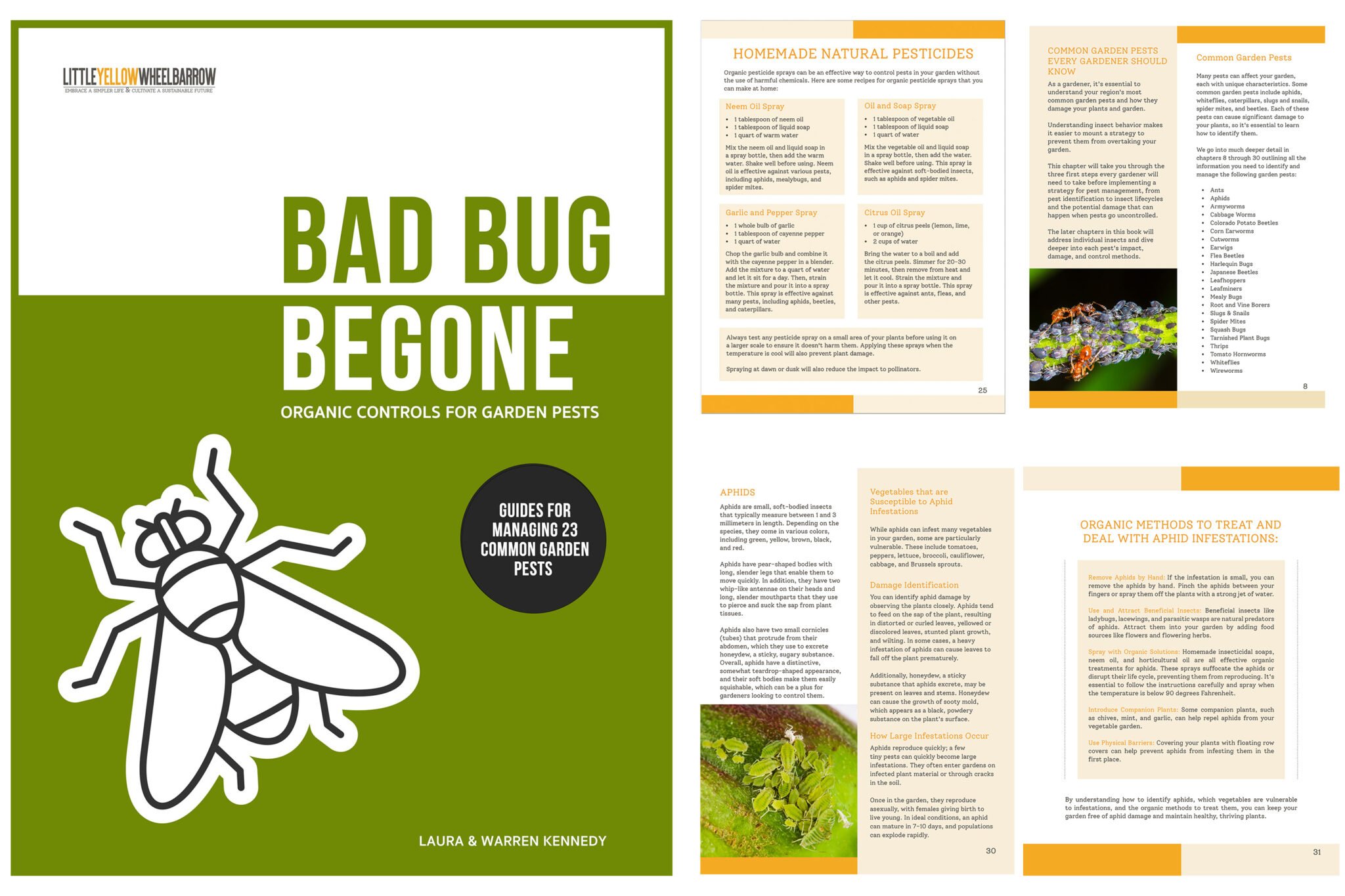
A must-have resource for Gardeners
Our digital e-book is for you if you’re a home gardener passionate about growing healthy, pesticide-free plants! Over 100 pages of organic pest management information are perfect for beginner gardeners and pros alike.
How to Harvest thyme
You can harvest thyme anytime by snipping off little bits at a time to use as needed. New growth will spring up and replace what you take in no time!
As with other plants in the mint family, harvest it just before the flowers bloom for optimal aroma and the best flavor.
Storing And Preserving thyme
Thyme is most flavorful when you use it immediately, but you can preserve it in other ways to use it all year.
If you want to dry your thyme, tie bunches of cuttings together and hang them upside down for a week or two. After the leaves are dried, remove them from the stems and store them in a dark cupboard.
Freeze thyme leaves by removing them from the sprigs, then put a few into ice cube tray compartments. Add water to each compartment until it’s full, then freeze. Add your frozen “flavor bombs” to your recipes as you cook.

Propagating Thyme Plants
Like many other mint plants, thyme seeds can be challenging to germinate, so I recommend growing thyme from cuttings.
Here’s how to propagate thyme:
- Trim off a 4-inch cutting of growth from an established plant.
- Remove the leaves on the bottom 2 inches of the cutting and dip the cut tip into rooting powder. Place it into sterile sand.
- It will take about six weeks for the roots to grow. At that point, plant the cutting into a small pot until a root ball forms.
- Once a root ball has formed, transplant your cutting into a larger pot directly in the garden outside or grow indoors.
Note: Thyme plant care indoors requires a bit of garden know-how. Thyme plants can be fussy and challenging to grow indoors primarily due to over-watering and lack of sunlight. If you choose to grow your thyme indoors, be sure the plant has adequate sunlight or the addition of a grow light. But most importantly, try to avoid overwatering. Wait until the soil dries out at least an inch deep before watering.
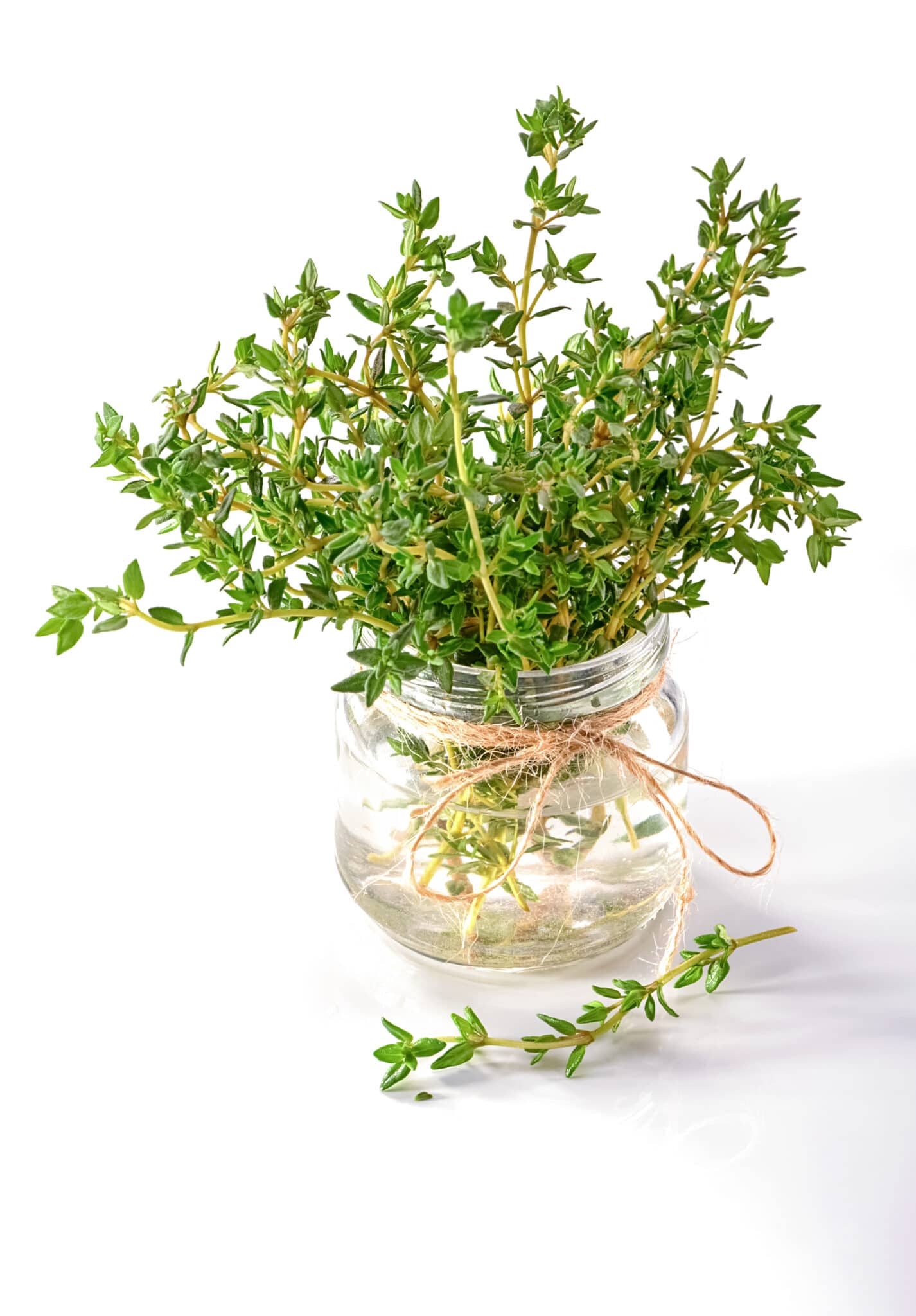
Uses for Thyme
Thyme plants are more than just a summery aroma and savory flavor. The herb has been valued for centuries for its medicinal and ornamental uses in addition to its culinary benefits.
Here are a few ideas of ways to use your thyme:
In History
Thyme has a rich history of uses! Here are just a few to give you an idea:
- The ancient Egyptians used thyme in their embalming process and to help the dead pass on to the next life.
- Ancient Romans believed it was an antidote to poison. (it’s not, please don’t try this)
- In the Middle Ages, soldiers were given bouquets with thyme in them to give them courage.
- For centuries, thyme has been prized for its antiseptic properties and used when bandaging wounds to prevent infection.
In Cooking
Using thyme as an aromatic herb in recipes is one common modern-day way to use it. Use thyme with:
- Teas
- Bread
- Casseroles
- Pasta
- Soups
- Stews
- Crackers
- Marinades
- As a great addition to chicken, pork, and fish dishes
- Pair it with foods such as carrots, cabbage, corn, eggplant, potatoes, onions, garlic, oregano, parsley, and rosemary!

Aromatherapy
Add aromatic thyme to your diffuser for a terrific mid-afternoon pick-me-up and boost mental alertness. Additionally, it can calm down a cough as well.
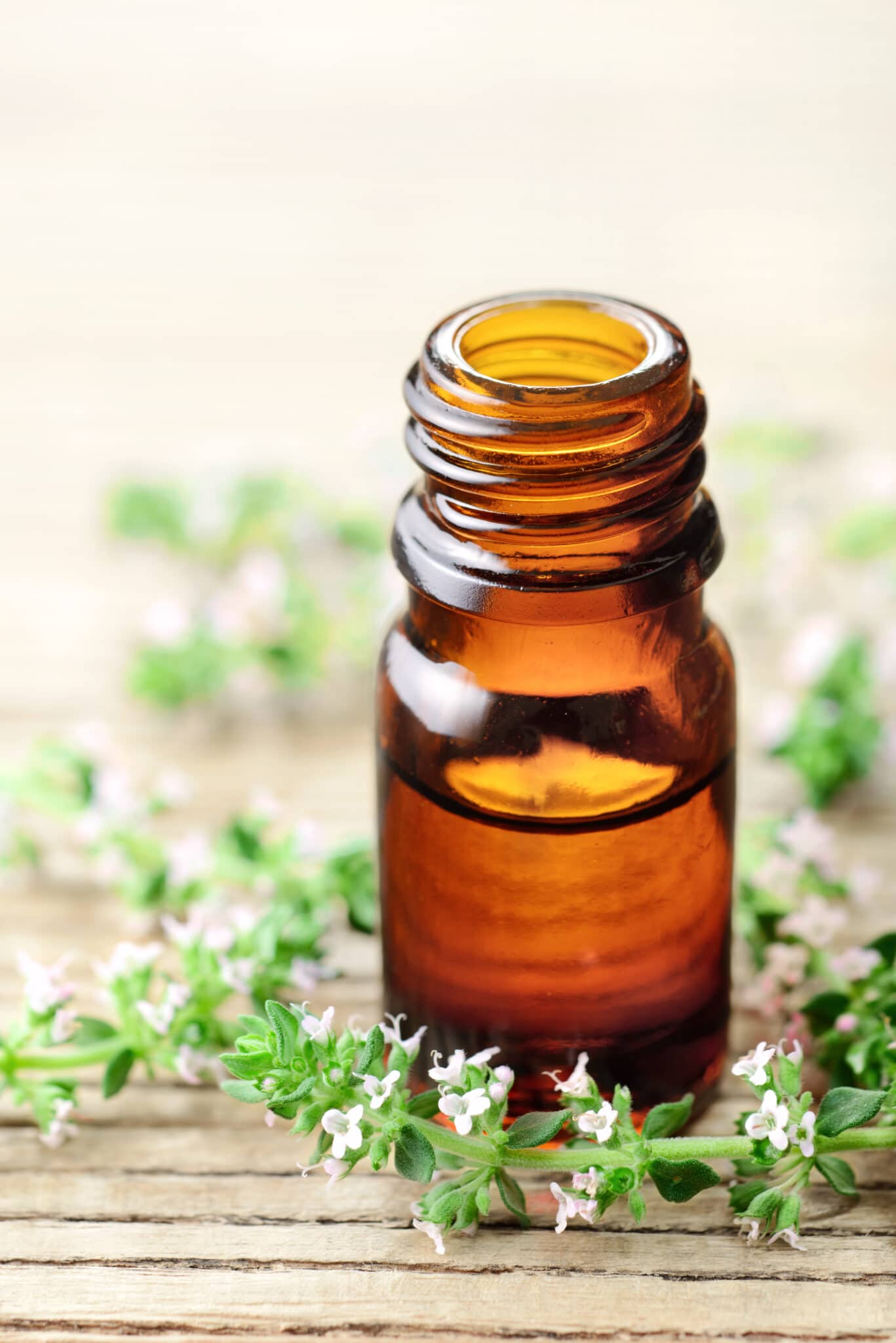
DIY Body And Home Products
Aside from its culinary uses, thyme has long been prized for its many antibacterial, antifungal, anti-inflammatory, and antimicrobial medicinal properties. Try adding it to many DIY body and home products such as:
- Toners
- Shampoos
- Soaps
- Lotions and creams
- Sugar scrubs
- Body scrubs
- Shower steamers
- Air fresheners
- Essential oils
- Mosquito and insect repellents
If you enjoy using thyme in the kitchen, learning how to grow this wonderful fragrant herb is the next step to add superior flavor to your cooking and enjoy the many other benefits thyme plants offer!
Editorial Note: This post was originally published on May 31, 2021, and was updated on January 5th, 2023.
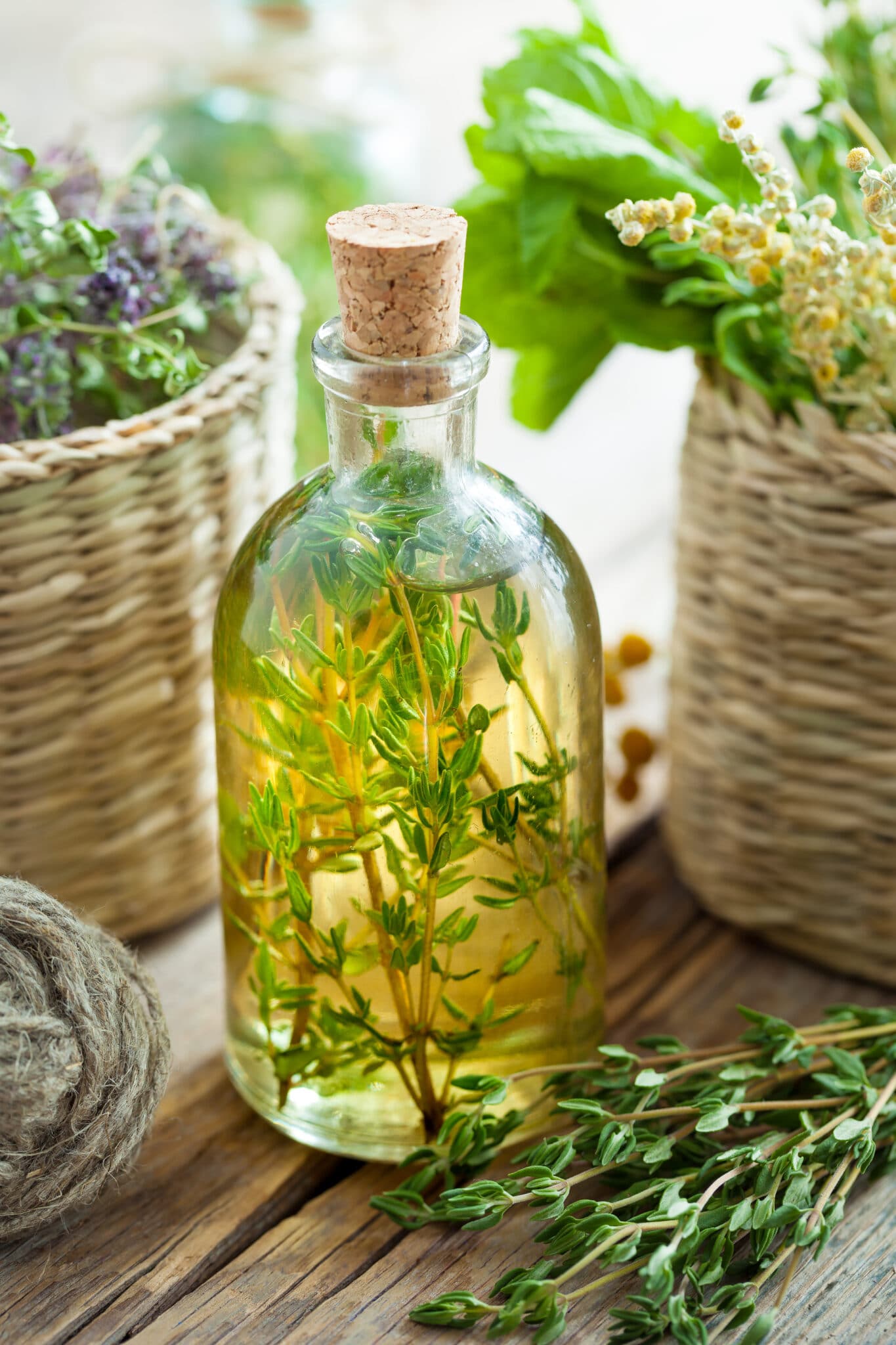
More Gardening Resources
- 6 Garden Ideas for Small Spaces and Maximum Yields
- Rosemary Plants: How To Grow, Harvest & Use Them
- Growing Cucumbers: When And How To Harvest Cucumbers
- How To Plan A Vegetable Garden In 7 Easy Steps
- How Weeds Grow: The Ultimate Care and Prevention Guide
- Guide to Planting and Growing Yarrow

